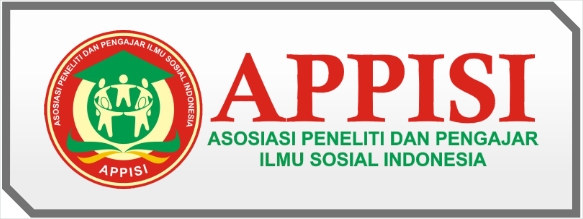Peran Emosi dalam Komunikasi Antarbudaya
Study Etnografi pada Komunitas Multikultur
DOI:
https://doi.org/10.59581/harmoni-widyakarya.v1i2.3720Keywords:
Emotion, Intercultural communication, Ethnography, Multicultural community, Cultural influenceAbstract
This research explores the role of emotions in intercultural communication through an ethnographic study of a multicultural community. Findings show significant variations in patterns of emotional expression across different ethnic groups and cultures, where cultural norms play an important role. Emotions such as joy, anger and disappointment are expressed differently based on cultural background, with examples such as East Asian holistic approaches compared to North American individual focus. Emotion regulation strategies also vary, influenced by the situation, individual disposition and cultural adaptations. Cultural values, norms and beliefs impact emotional experiences, with the interaction of gender and culture shaping the perception and expression of emotions.
Emotions play a key role in the dynamics of intercultural interactions, influencing relationship formation and the potential for conflict. Practical implications emphasize the importance of culturally sensitive communication for effective diversity management in organizations, improving team efficiency, and supporting organizational change. The research contributes theoretically by offering insights into the complexity of emotional processes in culturally diverse environments, enriching intercultural communication theory and the psychology of emotion. These results confirm the importance of an in-depth understanding of cultural diversity in emotions to promote more harmonious and effective interactions in multicultural environments.
References
Aka, B. T. (2023). Cultural dimensions of emotion regulation. Psikiyatride Güncel Yaklaşımlar, 15(3), 441-450.
Andrabi, T., Bau, N., Das, J., & Khwaja, A. I. (2023). Heterogeneity in School Value-Added and the Private Premium.
Ang, R. P. (2007). Emotion regulation and communication in children’s friendships: A developmental perspective. *New Directions for Child and Adolescent Development, 2007*(118), 35-49.
Atkinson-Abutridy, J. (2022). Text Analytics: An Introduction to the Science and Applications of Unstructured Information Analysis. Chapman and Hall/CRC.
Barrett, L. F. (2006). Solving the emotion paradox: Categorization and the experience of emotion. *Personality and Social Psychology Review, 10*(1), 20-46.
Beckett, G. H., & Kobayashi, M. (2020). A meta-study of an ethnographic research in a multicultural and multilingual community: Negotiations, resources, and dilemmas. American Journal of Qualitative Research, 4(1), 85-106.
Borjabad, S. A. F. (2023). La intersección entre la adquisición del lenguaje y la inteligencia artificial: explorando el potencial de los modelos de lenguaje natural. Revista Amazonia Investiga, 12(62), 7-9.
Cai, D. A., & Fink, E. L. (2002). Conflict styles and high-context communication: A cross-cultural extension. *Communication Research Reports, 19*(4), 367-377.
Campeggiani, P. (2022). Aristotle on feelings of bodily changes 1. In The Routledge Handbook of Bodily Awareness (pp. 73-82). Routledge.
Cano-García, F., Sanduvete-Chaves, S., & Chacón-Moscoso, S. (2018). Analysis of the impact of emotion regulation processes on achievement goals in higher education. *Frontiers in Psychology, 9*, 1896.
Carretié, L., Hinojosa, J. A., Albert, J., López‐Martín, S., De La Gándara, B. S., Igoa, J. M., & Sotillo, M. (2008). Modulation of ongoing cognitive processes by emotionally intense words. Psychophysiology, 45(2), 188-196.
Chang, E. C., & Sanna, L. J. (2001). Optimism, pessimism, and positive and negative affectivity in middle-aged adults: A test of a cognitive-affective model of psychological adjustment. *Psychology and Aging, 16*(3), 524-531.
Charles, F. G., Ismaiel, N., & Khoo, C. (2023). Promoting Culturally Sensitive Communication with Diverse Patient Populations. ASA Monitor, 87(4), 18-19.
Davis, M. H., & Oathout, H. A. (1987). Maintenance of satisfaction in romantic relationships: Empathy and relational competence. *Journal of Personality and Social Psychology, 53*(2), 397-410.
Ekman, P. (1992). An argument for basic emotions. *Cognition and Emotion, 6*(3-4), 169-200.
Ekman, P., Friesen, W. V., O'sullivan, M., Chan, A., Diacoyanni-Tarlatzis, I., Heider, K., ... & Tzavaras, A. (1987). Universals and cultural differences in the judgments of facial expressions of emotion. Journal of personality and social psychology, 53(4), 712.
Evnitskaya, N. (2014). Talking science in a second language: The interactional co-construction of dialogic explanations in the CLIL science classroom. Universitat Autònoma de Barcelona,.
Favorito, L. A. (Ed.). (2023). Systematic review and metanalysis in urology: how to interpret the forest plot. International braz j urol, 49(6), 775-778.
Fischer, A. H., & Manstead, A. S. (2008). Social functions of emotion. *Annual Review of Psychology, 59*, 573-595.
Florea, L. S. (2022). DIRECTIONS DE RECHERCHE SUR L’INTERACTION. Studia Universitatis Babes-Bolyai-Philosophia, 67(3), 71-90.
Gaspar, M. (2023). Manipulation in Translation: The Case of the Modern Woman and the Flirt in Early Twentieth-Century Latin American Magazines. In The Routledge Handbook of Latin American Literary Translation (pp. 344-361). Routledge.
Gelfand, M. J., Nishii, L. H., Holcombe, K. M., Dyer, N., Ohbuchi, K. I., & Fukuno, M. (2001). Cultural influences on cognitive representations of conflict: Interpretations of conflict episodes in the United States and Japan. Journal of applied psychology, 86(6), 1059.
Gudykunst, W. B., & Kim, Y. Y. (2003). Communicating with strangers: An approach to intercultural communication. *McGraw-Hill.*
Haboush-Deloye, A. (2023). The Importance of Community Voice: Using Community-Based Participatory Research to Understand the Experiences of African American, Native American, and Latinx People During a Pandemic. Preventing Chronic Disease, 20.
Hall, E. T. (1976). Beyond culture. *Anchor Books.*
Hall, E. T. (1976). Beyond culture. Anchor.
Hofstede, G. (1984). Culture’s consequences: International differences in work-related values. *Sage Publications.*
Ingram, J. (2022, February). The status and negotiation of knowledge when teachers repeat students' words. In Twelfth Congress of the European Society for Research in Mathematics Education (CERME12) (No. 07).
Ip, H. H., Wong, S. W., Chan, D. F., Li, C., Kon, L. L., Ma, P. K., ... & Byrne, J. (2022). Enhance affective expression and social reciprocity for children with autism spectrum disorder: using virtual reality headsets at schools. Interactive Learning Environments, 1-24.
Iwakabe, S., Nakamura, K., & Thoma, N. C. (2023). Enhancing emotion regulation. Psychotherapy Research, 33(7), 918-945.
Jimenez, M. E., Hudson, S. V., Lima, D., & Crabtree, B. F. (2019). Engaging a community leader to enhance preparation for in-depth interviews with community members. Qualitative health research, 29(2), 270-278.
Kaleta, K., & Mróz, J. (2021). The effect of apology on emotional and decisional forgiveness: The role of personality. Personality and Individual Differences, 168, 110310.
Kemi, S. A. (2023). School principals’ implementation of Information and Communication Technology Policy in Lagos State secondary schools, Nigeria (Doctoral dissertation, UNIVERSITY OF PRETORIA).
Lamminen, J., Forsvik, H., Voipio, V., & Lehtonen, L. (2015). Decision making process for clinical it investments in a public health care organization–contingency approach to support the investment decision process. Finnish Journal of eHealth and eWelfare, 7(2-3), 122-134.
Larson, P. D., & Foropon, C. (2018). Process improvement in humanitarian operations: an organisational theory perspective. International Journal of Production Research, 56(21), 6828-6841.
Lerner, J. S., Li, Y., Valdesolo, P., & Kassam, K. S. (2015). Emotion and decision making. Annual review of psychology, 66, 799-823.
Maharramova, V. (2022). Characteristic Features Of Intercultural Communication. Scientific Journal of Polonia University, 54(5).
Markus, H. R., & Kitayama, S. (1991). Culture and the self: Implications for cognition, emotion, and motivation. *Psychological Review, 98*(2), 224-253.
Matsumoto, D. (1996). Culture and psychology. *Pacific Grove, CA: Brooks/Cole.*
Matsumoto, D., & Hwang, H. S. (2013). Culture and emotion: The integration of biological and cultural contributions. *Journal of Cross-Cultural Psychology, 44*(7), 1119-1139.
Matsumoto, D., & Wilson, M. (2022). A half-century assessment of the study of culture and emotion. Journal of Cross-Cultural Psychology, 53(7-8), 917-934.
Mesquita, B., & Albert, D. (2007). The cultural regulation of emotions. The Guilford Press.
Mesquita, B., & Frijda, N. H. (1992). Cultural variations in emotions: a review. Psychological bulletin, 112(2), 179.
Mirabile, S. P. (2014). Parents' inconsistent emotion socialization and children's socioemotional adjustment. Journal of Applied Developmental Psychology, 35(5), 392-400.
Mirabile, S. P. (2014). Parents' inconsistent emotion socialization and children's socioemotional adjustment. Journal of Applied Developmental Psychology, 35(5), 392-400.
Moldenhawer, B. (2023). The role of emotions in educational work with asylum-seeking and refugee children in culturally diverse classrooms. Intercultural Education, 34(2), 166-179.
Mulu, F., & Chungo, D. (2023). Emotions in Negotiation and Mediation: Strategies for Managing Emotional Dynamics. International Journal of Research and Innovation in Social Science, 7(5), 1732-1741.
Nethery, A., & Gordyn, C. (2014). Australia–Indonesia cooperation on asylum-seekers: a case of ‘incentivised policy transfer’. Australian Journal of International Affairs, 68(2), 177-193.
Nisbett, R. E., & Masuda, T. (2003). Culture and point of view. *Proceedings of the National Academy of Sciences, 100*(19), 11163-11170.
Oskoz, A., & Vinagre, M. (2020). Understanding attitude in intercultural virtual communication (pp. 1-204).
Parkinson, B., & Manstead, A. S. (1992). Appraisal as a cause of emotion. In M. S. Clark (Ed.), *Review of personality and social psychology: Emotion and social behavior* (Vol. 13, pp. 122-149). *Sage Publications.*
Perry, N. B., & Donzella, B. (2023). Emotion regulation as a predictor of patterns of change in behavior problems in previously institutionalized youth. Development and Psychopathology, 1-17.
Ramirez-Marin, J. Y., Barragan Diaz, A., & Guzman, F. A. (2022). When anger and happiness generate concessions: investigating counterpart’s culture and negotiation intentions. International Journal of Conflict Management, 33(1), 111-131.
Ravshanovich, A. O. (2022). EMOTIONS AND GESTURES ARISING BETWEEN CULTURES AND CUSTOMS. American Journal Of Social Sciences And Humanity Research, 2(08), 11-14.
Reinhard, M. A., & Sporer, S. L. (2010). Content versus source cue information as a basis for credibility judgments. Social Psychology.
Russell, J. A. (1980). A circumplex model of affect. *Journal of Personality and Social Psychology, 39*(6), 1161-1178.
Rymes, B. (2022). Studying language in interaction: a practical research guide to communicative repertoire and sociolinguistic diversity. Routledge.
Safdar, S., Friedlmeier, W., Matsumoto, D., Yoo, S. H., Kwantes, C. T., Kakai, H., & Shigemasu, E. (2009). Variations of emotional display rules within and across cultures: A comparison between Canada, USA, and Japan. Canadian Journal of Behavioural Science/Revue canadienne des sciences du comportement, 41(1), 1.
Sakthi Gnanavel, S. (2022). Comparative Evaluation of Various Splinting Materials on the Positional Accuracy of Multiple Transmucosal Abutments using Open Tray Impression Technique: An In Vitro study (Doctoral dissertation, KSR Institute of Dental Science and Research, Tiruchengode).
Samuels, E., Vereen, D., Piechowski, P., McKay, A., De Loney, E. H., Bailey, S., ... & Woolford, S. (2023). Developing relevant assessments of community-engaged research partnerships: A community-based participatory approach to evaluating clinical and health research study teams. Journal of Clinical and Translational Science, 7(1), e123.
Scherer, K. R. (2005). What are emotions? And how can they be measured? *Social Science Information, 44*(4), 695-729.
Simpson, P. A., & Stroh, L. K. (2004). Gender differences: emotional expression and feelings of personal inauthenticity. Journal of Applied psychology, 89(4), 715.
Smith, P. B., & Bond, M. H. (1998). Social psychology across cultures: Analysis and perspectives. *Allyn & Bacon.*
Straulino, E., Scarpazza, C., & Sartori, L. (2023). What is missing in the study of emotion expression?. Frontiers in Psychology, 14, 1158136.
Tarasov, E. F. (2022). Introduction to Psycholinguistic Theory of Intercultural Communication. RUDN Journal of Language Studies, Semiotics and Semantics, 13(4), 861-875.
Verkerk, L., Fuller, J. M., Huiskes, M., & Schüppert, A. (2023). Expression and interpretation of emotions in multilingual psychotherapy: A literature review. Counselling and Psychotherapy Research, 23(3), 617-626.
Wang, B., Liang, B., Chen, Q., Wang, S., Wang, S., Huang, Z., ... & Liu, Q. (2023). COVID-19 Related Early Google Search Behavior and Health Communication in the United States: Panel Data Analysis on Health Measures. International Journal of Environmental Research and Public Health, 20(4), 3007.
Wang, D., Zhang, Q., Xu, Y., Zhang, J., Du, B., Tao, D., & Zhang, L. (2022). Advancing plain vision transformer toward remote sensing foundation model. IEEE Transactions on Geoscience and Remote Sensing, 61, 1-15.
Weżgowiec, B., & Żaliński, A. (2022). Słowo wprowadzające: Emocje w kulturze/Kultura emocji. Intercultural Relations, 6(1 (11)), 7-10.
Widyadari, R., & Fitriani, Y. (2023). Regulasi Emosi Ditinjau Berdasarkan Jenis Kelamin pada Siswa SMP. Journal on Education, 6(1), 7225-7233.
Xiaohui, Y. (2023). The Establishment of the African Continental Free Trade Area (AfCFTA) and Its Impact on China-Africa Economic and Trade Cooperation. J. WTO & China, 13, 115.
Xie, S. Y., Thai, S., & Hehman, E. (2023). Everyday perceiver-context influences on impression formation: No evidence of consistent effects. Personality and Social Psychology Bulletin, 49(6), 955-968.
Downloads
Published
How to Cite
Issue
Section
License
Copyright (c) 2023 Almadina Rakhmaniar

This work is licensed under a Creative Commons Attribution-ShareAlike 4.0 International License.














